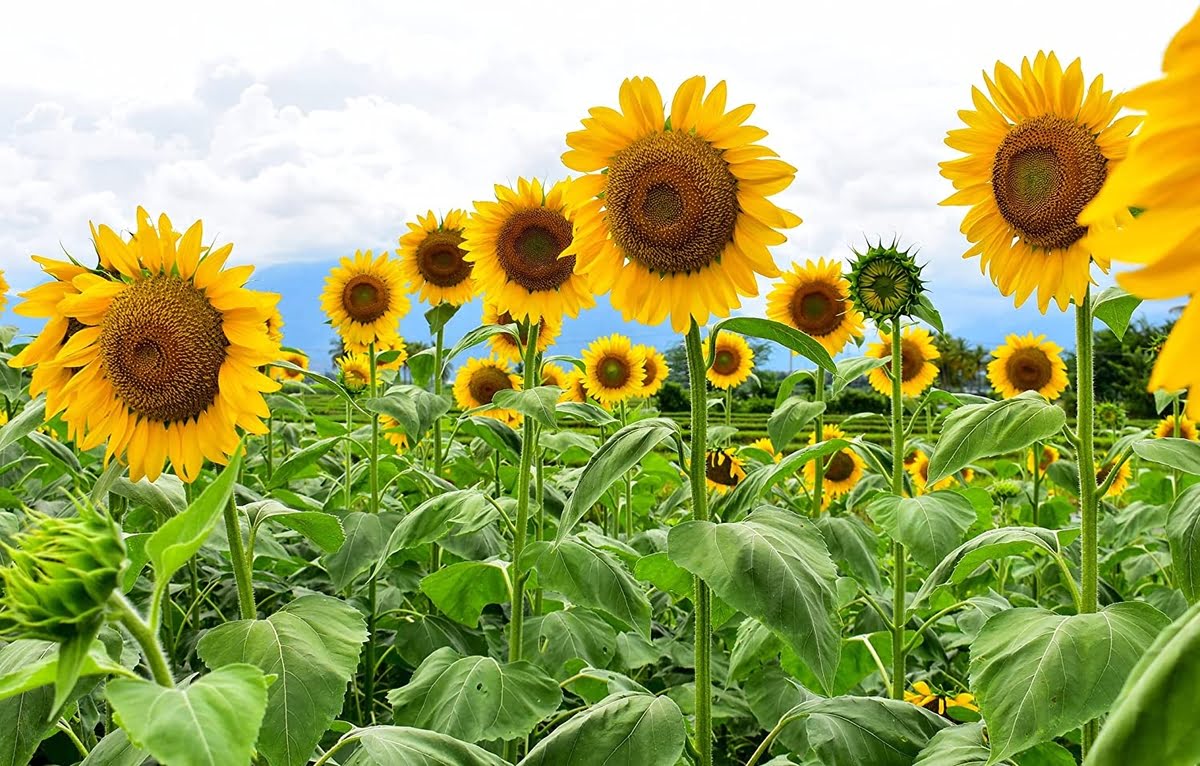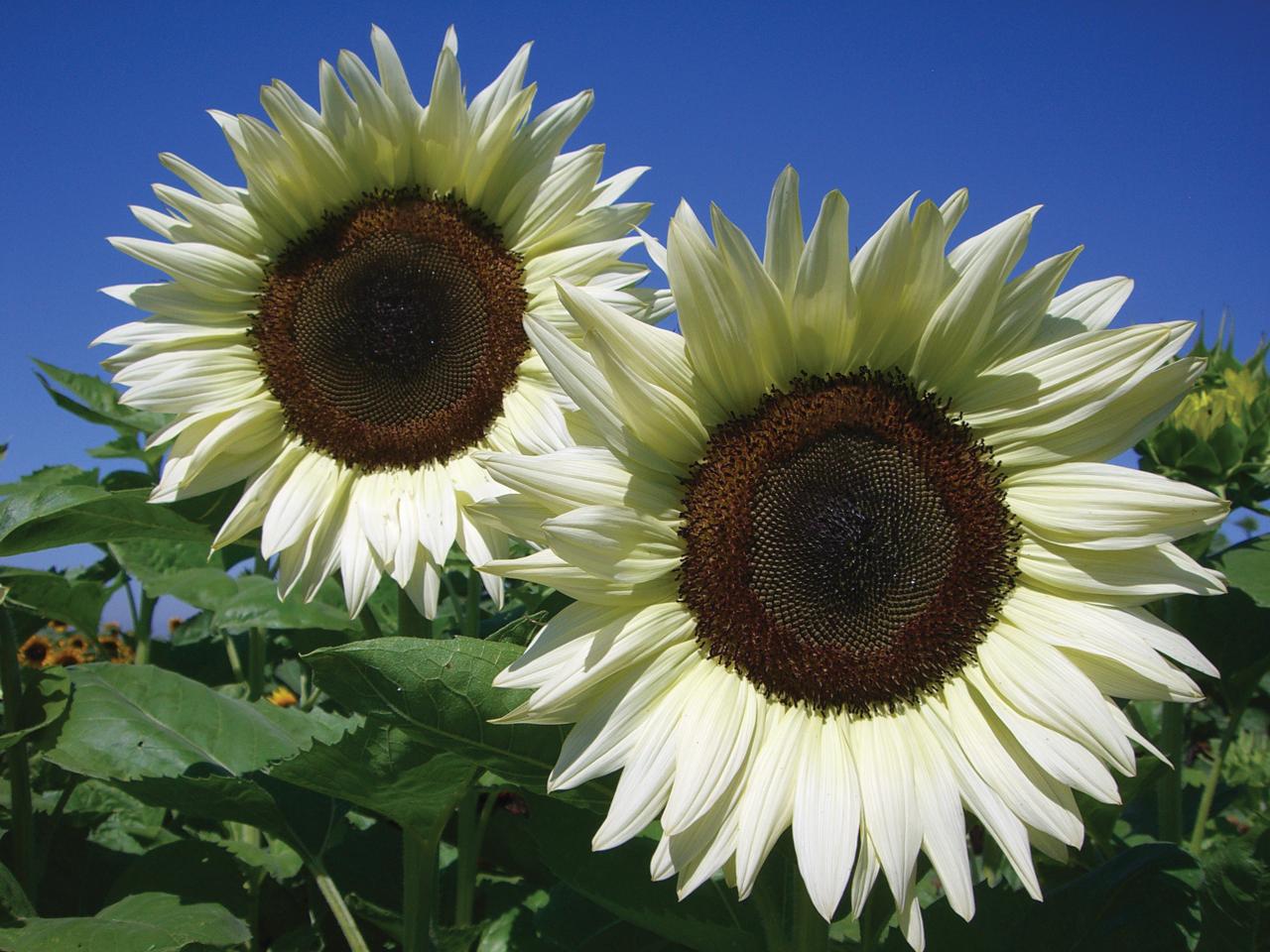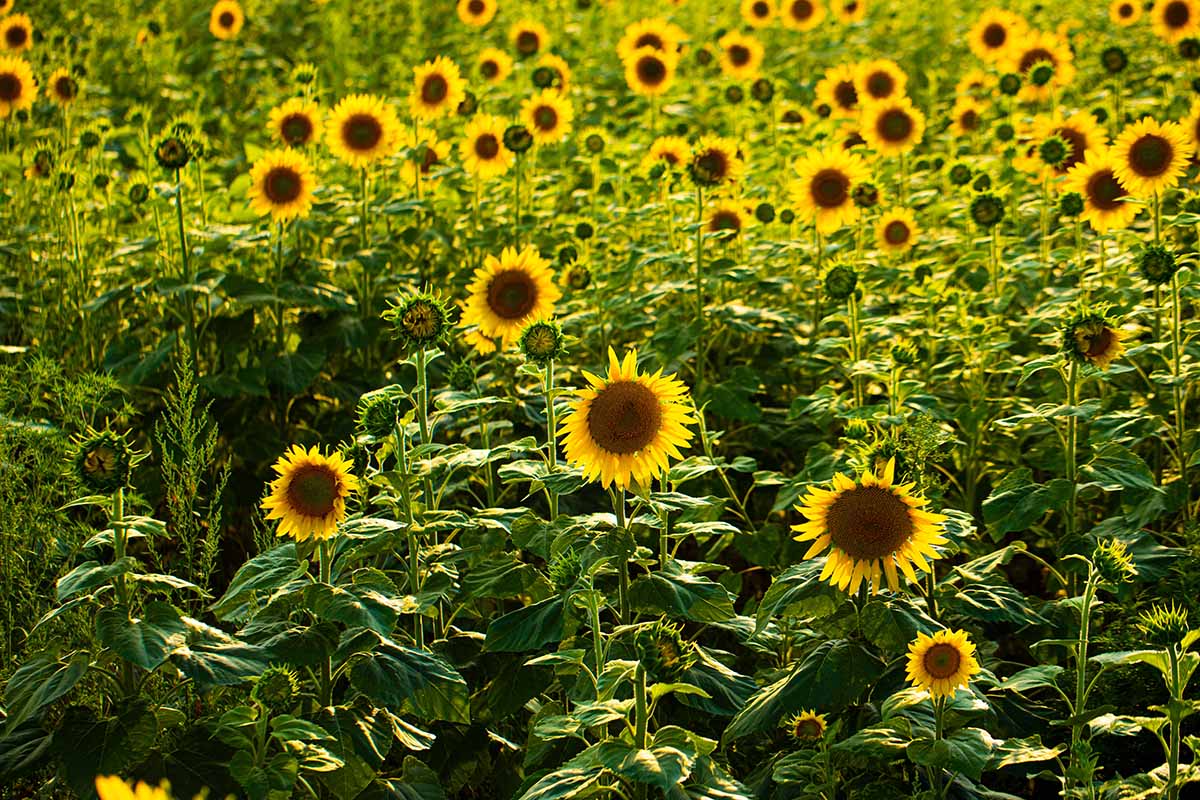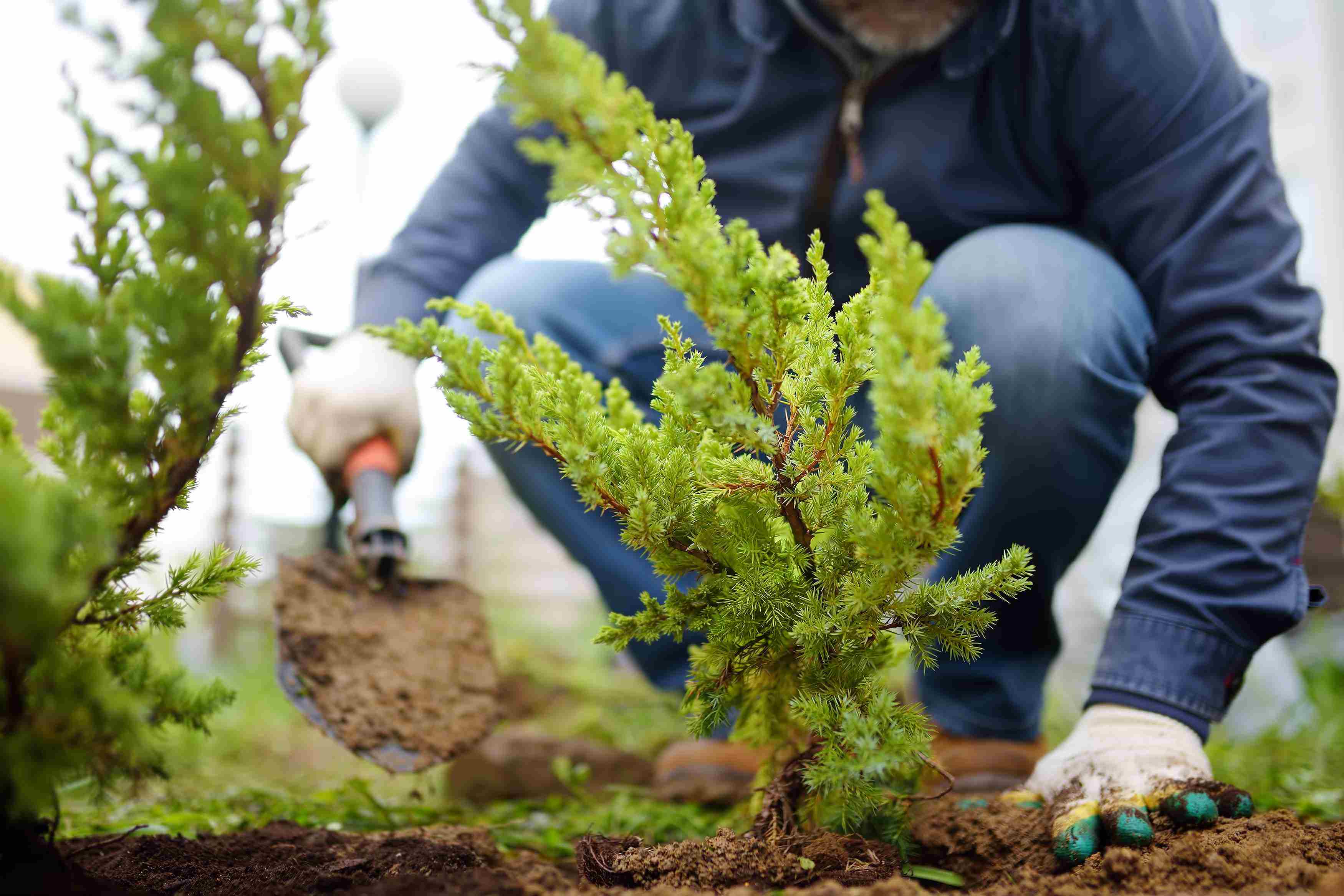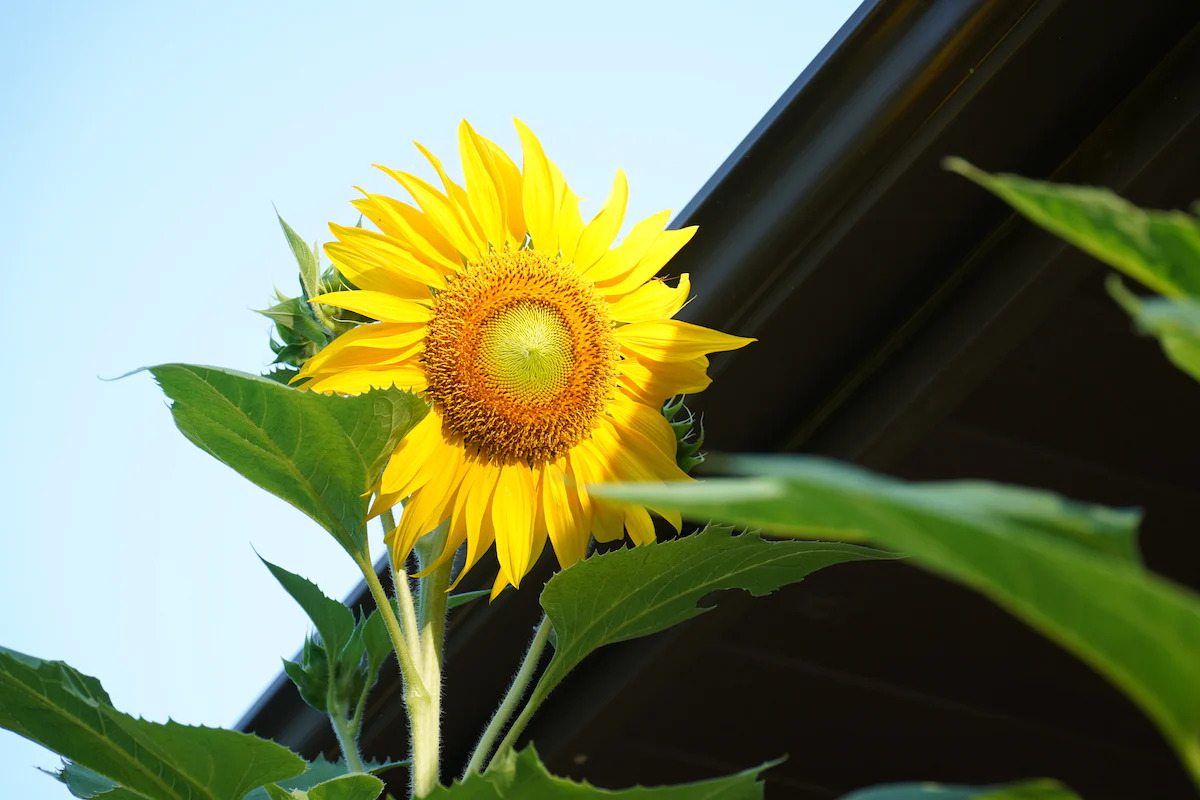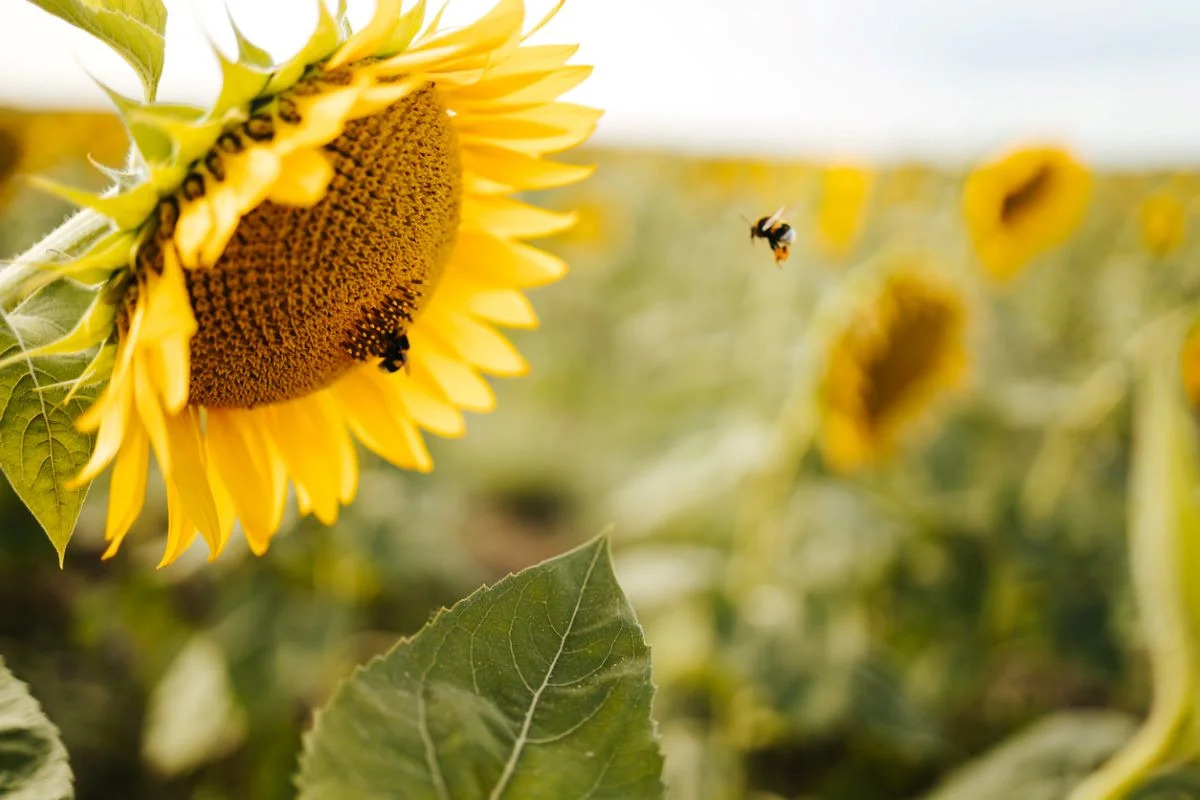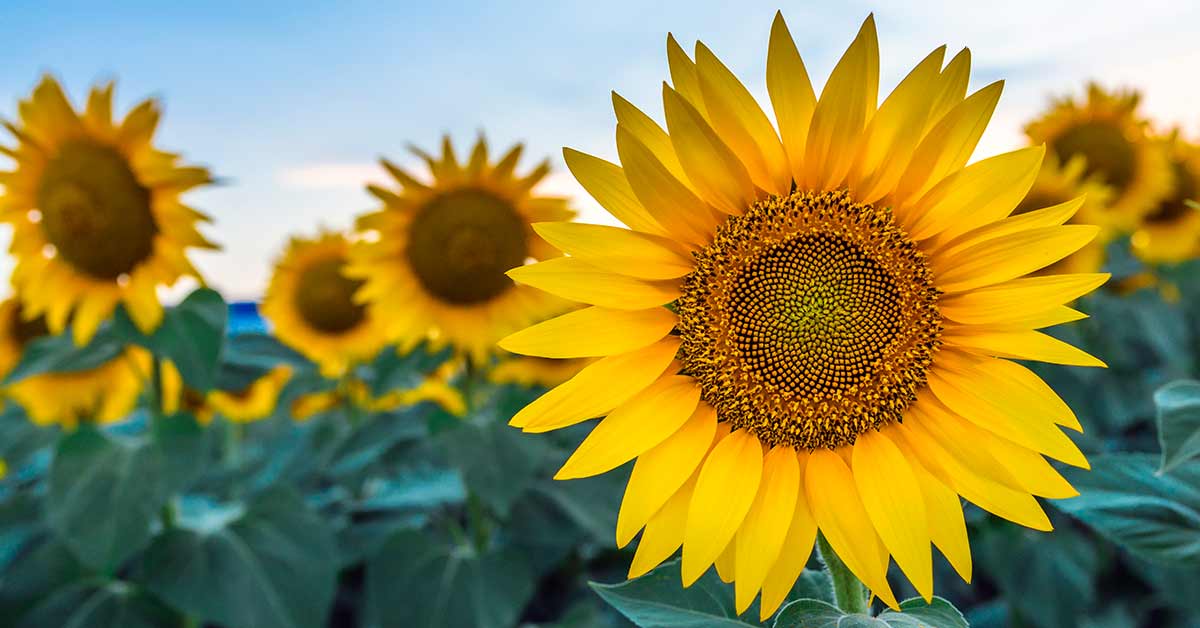Home>Types of Gardening>Ornamental Gardening>How To Grow Sunflowers In Arizona


Ornamental Gardening
How To Grow Sunflowers In Arizona
Modified: January 22, 2024
Discover the secrets of growing vibrant sunflowers in Arizona with our expert ornamental gardening tips. Learn how to cultivate stunning sunflower blooms in the desert climate.
(Many of the links in this article redirect to a specific reviewed product. Your purchase of these products through affiliate links helps to generate commission for Chicagolandgardening.com, at no extra cost. Learn more)
Table of Contents
Introduction
Welcome to the sunny world of ornamental gardening in Arizona! If you're looking to add a burst of vibrant color and a touch of natural beauty to your garden, then growing sunflowers is an excellent choice. With their striking appearance and cheerful demeanor, sunflowers can bring a sense of warmth and positivity to any outdoor space. In this guide, we will explore the art of cultivating sunflowers in the unique climate of Arizona, where the intense sunlight and arid conditions present both opportunities and challenges for gardeners.
Sunflowers, scientifically known as Helianthus annuus, are not only visually stunning but also serve as a valuable source of food for birds and pollinators. The process of nurturing these radiant blooms from seed to full maturity can be a deeply rewarding experience. Whether you're a novice gardener or a seasoned horticulture enthusiast, the journey of growing sunflowers in Arizona promises to be both educational and gratifying.
Throughout this guide, we will delve into the essential steps and considerations for successfully cultivating sunflowers in the Arizona climate. From selecting the right sunflower variety to harvesting the mature blooms, each stage of the growth process will be explored in detail. By understanding the specific needs and preferences of sunflowers, you can create an environment that fosters their optimal development and ensures a bountiful display of golden petals.
So, grab your gardening gloves and get ready to embark on a sunny adventure as we uncover the secrets of growing magnificent sunflowers in the radiant state of Arizona. Whether you're aiming to adorn your backyard with a dazzling array of sun-kissed blooms or simply seeking to immerse yourself in the art of ornamental gardening, the journey of cultivating sunflowers is bound to fill your days with joy and natural splendor.
Choosing the Right Sunflower Variety
When embarking on the journey of growing sunflowers in Arizona, selecting the right sunflower variety is a crucial first step. With a wide array of sunflower cultivars available, each boasting unique characteristics and growth habits, it’s essential to choose a variety that aligns with the specific requirements of the Arizona climate.
One of the primary considerations when selecting a sunflower variety is the mature height of the plants. For Arizona’s gardens, where ample sunlight and well-drained soil are prevalent, taller varieties such as "Giant Sungold" or "Mammoth Russian" can make a striking statement with their towering stems and large, radiant flower heads. On the other hand, if space is limited or if you prefer a more compact sunflower, "Dwarf Sunspot" or "Music Box" varieties may be more suitable choices.
Another factor to consider is the color and appearance of the sunflower blooms. While the classic bright yellow petals are a popular choice, there are also varieties that exhibit rich, bronze hues or striking bi-colored patterns. For those seeking a touch of diversity in their sunflower display, "Autumn Beauty" or "Strawberry Blonde" varieties can offer a captivating blend of colors that harmonize with Arizona’s vibrant landscape.
Furthermore, it’s important to take into account the intended purpose of the sunflowers. Whether you aim to use the blooms for ornamental arrangements, bird feed, or simply to add visual allure to your garden, selecting a variety with the appropriate seed and flower characteristics is essential. Some varieties, such as "Black Oil" sunflowers, are renowned for their abundant seeds and are favored by gardeners looking to attract birds and wildlife.
By carefully considering these factors and exploring the diverse range of sunflower varieties available, you can make an informed decision that aligns with your gardening goals and the unique environmental conditions of Arizona. The right sunflower variety will not only thrive in the Arizona climate but also elevate the visual appeal of your garden, infusing it with the radiant charm of these iconic blooms.
Selecting the Right Location
Choosing the optimal location for cultivating sunflowers in Arizona is a pivotal factor that significantly influences the growth and blooming success of these radiant flowers. The desert climate of Arizona presents unique challenges, such as intense sunlight and arid conditions, which must be carefully considered when selecting the ideal spot for your sunflower patch.
First and foremost, sunflowers thrive in full sunlight, making it essential to choose a location that receives ample sunlight throughout the day. In Arizona, this may entail selecting a spot in your garden that is unobstructed by tall structures or trees, allowing the sunflowers to bask in the abundant sunshine that characterizes the state’s climate.
Moreover, the soil quality and drainage of the chosen location play a crucial role in the successful cultivation of sunflowers. Arizona’s soil is often characterized by its arid nature, and as such, it’s important to ensure that the selected site has well-drained soil to prevent waterlogging, which can be detrimental to the growth of sunflowers. Amending the soil with organic matter and ensuring proper drainage will create an environment conducive to healthy root development and overall plant vigor.
Additionally, considering the potential height of the chosen sunflower variety is essential when selecting the location. Taller varieties may require a spot that is sheltered from strong winds to prevent stem breakage, while shorter varieties can thrive in more exposed areas. Understanding the growth habits of the selected sunflower cultivar will guide you in choosing a location that provides the necessary support and protection for the plants.
Lastly, the aesthetic appeal and visual impact of the sunflowers should not be overlooked when selecting the location. Placing the sunflower patch in a prominent area of your garden, such as along a fence line or as a backdrop to other flowering plants, can create a stunning display that adds a touch of natural grandeur to your outdoor space.
By carefully assessing these considerations and selecting a location that aligns with the specific needs of sunflowers, you can create an environment where these radiant blooms can flourish and captivate with their vibrant beauty, enhancing the allure of your Arizona garden.
Preparing the Soil
Preparing the soil is a crucial preparatory step that sets the foundation for the successful cultivation of sunflowers in Arizona’s unique climate. The arid nature of the soil in many parts of Arizona necessitates thoughtful soil preparation to ensure that it provides the necessary nutrients and structure to support the growth of vibrant sunflowers.
Before planting sunflower seeds, it’s essential to assess the soil quality and make any necessary amendments to optimize its fertility and texture. Conducting a soil test can provide valuable insights into the pH levels and nutrient composition of the soil, guiding you in making informed decisions about the amendments needed to create an ideal growing environment for sunflowers.
Given Arizona’s arid climate, incorporating organic matter into the soil is particularly beneficial. Compost, well-rotted manure, or other organic materials can improve the soil’s water retention capacity and enhance its overall structure, providing a more hospitable environment for sunflower root development.
Additionally, ensuring proper drainage is essential in Arizona’s soil, where water retention can be a challenge. Amending the soil with coarse sand or perlite can help improve drainage and prevent waterlogging, which can be detrimental to sunflower growth. Well-drained soil not only promotes healthy root development but also reduces the risk of root rot, a common issue in waterlogged conditions.
Furthermore, incorporating a balanced fertilizer into the soil can provide the essential nutrients that sunflowers need for robust growth and prolific blooming. A slow-release, granular fertilizer with a balanced NPK ratio can be worked into the soil prior to planting, ensuring that the sunflowers have access to vital nutrients as they grow and develop.
By taking the time to prepare the soil thoughtfully and address its specific needs, you can create an optimal growing environment for sunflowers in Arizona. The enriched and well-structured soil will not only support the healthy growth of sunflowers but also contribute to the vibrancy and longevity of their stunning blooms, enhancing the visual appeal of your garden.
Planting Sunflower Seeds
Planting sunflower seeds marks an exciting phase in the journey of cultivating these iconic blooms in the Arizona climate. The process of sowing sunflower seeds requires careful consideration of timing, spacing, and planting depth to ensure the successful germination and growth of these radiant flowers.
Timing is a critical factor when planting sunflower seeds in Arizona. The region’s warm and sunny climate presents an opportunity for an extended growing season, allowing for multiple successional plantings. However, it’s important to consider the potential impact of intense heat on young seedlings. Therefore, planting sunflower seeds in early spring or after the peak of summer heat has passed can provide an optimal start for the plants.
When it comes to spacing, providing adequate room for each sunflower plant is essential for their unhindered growth and development. Depending on the mature size of the chosen sunflower variety, spacing the seeds approximately 6 to 18 inches apart can ensure that the plants have ample space to spread their roots and receive adequate sunlight and airflow.
The planting depth of sunflower seeds is another crucial consideration, as it directly impacts the germination process. In Arizona’s well-drained soil, planting sunflower seeds at a depth of 1 to 1.5 inches is generally suitable. Ensuring consistent soil moisture during the germination period is important, as it supports the emergence of healthy seedlings.
Furthermore, considering the potential impact of wildlife, particularly birds and rodents, on newly planted sunflower seeds is important. Protecting the seeds with a lightweight row cover or utilizing deterrents can help prevent damage and loss of seeds, ensuring a higher germination rate and a more successful start for the sunflowers.
By adhering to these guidelines and taking into account the specific needs of sunflower seeds, you can set the stage for the successful germination and growth of these vibrant blooms in the Arizona climate. The process of planting sunflower seeds marks the beginning of a journey that promises to culminate in a breathtaking display of golden petals, adding a touch of natural splendor to the Arizona landscape.
Watering and Fertilizing
Watering and fertilizing are essential aspects of nurturing sunflowers in the arid climate of Arizona, where the intense sunlight and low precipitation levels pose unique challenges for plant growth. By implementing thoughtful watering practices and providing appropriate fertilization, you can support the healthy development and robust blooming of sunflowers in the Arizona landscape.
When it comes to watering sunflowers in Arizona, it’s crucial to strike a balance between providing adequate moisture and preventing waterlogged conditions. The frequency of watering will largely depend on the prevailing weather conditions and the moisture retention capacity of the soil. During the hot summer months, when the soil tends to dry out quickly, regular deep watering sessions can benefit the sunflowers, ensuring that their root systems receive the necessary hydration to thrive.
Implementing a drip irrigation system or soaker hoses can be an efficient way to deliver water directly to the base of the sunflowers, minimizing water loss through evaporation and promoting deep root growth. Additionally, applying a layer of organic mulch around the base of the sunflowers can help conserve soil moisture, reduce weed competition, and insulate the soil, contributing to more efficient water usage.
As for fertilizing sunflowers, providing a balanced and slow-release fertilizer can supply the essential nutrients that may be lacking in Arizona’s soil. A granular fertilizer with a balanced NPK ratio can be applied around the base of the sunflowers, following the package instructions for application rates. Furthermore, incorporating organic fertilizers, such as compost or well-rotted manure, into the soil during the initial planting phase can contribute to the long-term fertility of the soil and provide a gradual release of nutrients to the sunflowers.
Observing the visual cues of the sunflowers, such as leaf color and overall growth, can guide you in adjusting the fertilization regimen to meet their specific needs. However, it’s important to avoid over-fertilizing, as excessive nitrogen, in particular, can lead to lush foliage at the expense of flower production.
By implementing a well-calibrated watering schedule and providing appropriate fertilization, you can create an environment that supports the healthy growth and abundant blooming of sunflowers in Arizona. These nurturing practices will not only contribute to the vitality of the sunflowers but also enhance the overall allure of your garden, infusing it with the vibrant charm of these iconic blooms.
Protecting Sunflowers from Pests and Diseases
While cultivating sunflowers in Arizona’s unique climate, it’s important to be mindful of potential pests and diseases that can affect the health and vitality of these radiant blooms. By implementing proactive measures and staying vigilant for signs of infestation or illness, you can safeguard your sunflowers from common threats and ensure their continued growth and beauty.
One prevalent pest that can pose a threat to sunflowers in Arizona is the sunflower moth. The larvae of these moths can cause damage by feeding on the developing seeds within the sunflower heads. To mitigate the impact of sunflower moths, monitoring the plants for signs of infestation and promptly removing any affected heads can help prevent the spread of the pests. Additionally, introducing natural predators of the sunflower moth, such as beneficial insects or birds, can aid in controlling their population.
Aphids, tiny insects that feed on plant sap, are another potential concern for sunflowers. These pests can cluster on the undersides of leaves and excrete a sticky substance that can attract mold and affect the overall health of the plants. Regularly inspecting the sunflowers for aphid infestations and using a strong blast of water to dislodge the pests can help keep their populations in check without the need for chemical interventions.
When it comes to diseases, sunflowers in Arizona may be susceptible to fungal infections, particularly in humid conditions or during periods of excessive moisture. Botrytis, or gray mold, can affect the flower heads, causing them to rot and deteriorate. To prevent fungal diseases, it’s important to promote good air circulation around the sunflowers by spacing the plants appropriately and avoiding overhead watering, which can create conditions conducive to fungal growth.
Implementing preventive measures, such as practicing crop rotation and maintaining overall garden hygiene, can also contribute to disease management by reducing the buildup of pathogens in the soil. Additionally, selecting disease-resistant sunflower varieties can provide an added layer of protection against common fungal infections, ensuring the long-term health and vigor of the plants.
By staying informed about potential pests and diseases that can affect sunflowers in Arizona and taking proactive steps to address these challenges, you can create an environment where these radiant blooms can thrive without succumbing to common threats. Vigilance, combined with thoughtful preventive measures, will contribute to the continued beauty and resilience of your sunflower patch, enhancing the natural splendor of your Arizona garden.
Harvesting Sunflowers
Harvesting sunflowers is a gratifying culmination of the nurturing process, marking the transition from vibrant blooms to valuable seeds that can be enjoyed for their ornamental beauty and nutritional benefits. In Arizona’s climate, where sunflowers flourish under the abundant sunlight, timing and technique are key considerations when harvesting these iconic flowers to maximize their yield and utility.
One of the primary indicators of a sunflower’s readiness for harvest is the appearance of the flower head. As the sunflower matures, the vibrant yellow petals will gradually dry and drop, revealing the disk florets at the center of the head. At this stage, the back of the flower head will turn from green to yellow or brown, signaling that the seeds are approaching maturity.
Timing the harvest is crucial to ensure that the seeds have reached full maturity and are ready for processing. Ideally, the sunflower heads should be harvested when the back of the flower head turns brown, and the seeds appear plump and developed. Harvesting too early may result in seeds that are undersized and not fully mature, affecting their quality and flavor.
To harvest sunflower heads, use sharp pruners or a sturdy knife to cut the heads from the stalk, leaving several inches of stem attached. This stem can serve as a convenient handle for handling and drying the sunflower heads. As you harvest the sunflowers, it’s important to handle the heads gently to avoid dislodging the seeds prematurely.
After harvesting, the sunflower heads can be hung in a well-ventilated and dry area to complete the drying process. Allowing the sunflowers to dry thoroughly is essential for facilitating the extraction of the seeds and preserving their quality. Once the heads are fully dry, the seeds can be removed by hand or with the help of a fork or comb, gently dislodging the seeds from the flower head.
For those growing sunflowers for ornamental purposes, the dried flower heads can be preserved and used in decorative arrangements, adding a rustic and natural touch to indoor spaces. On the other hand, for those interested in the culinary applications of sunflower seeds, the harvested seeds can be roasted and seasoned, offering a nutritious and flavorful snack.
By understanding the visual cues of sunflower maturity and employing proper harvesting techniques, you can extract the full potential of these radiant blooms, whether for ornamental or culinary use. The process of harvesting sunflowers is a rewarding endeavor that allows you to savor the fruits of your labor and appreciate the multifaceted beauty and utility of these iconic flowers in the Arizona landscape.
Conclusion
Embarking on the journey of growing sunflowers in the radiant state of Arizona unveils a tapestry of natural beauty, resilience, and gratifying experiences. From the initial selection of the right sunflower variety to the rewarding harvest of vibrant blooms and nutritious seeds, the process of nurturing sunflowers in Arizona’s unique climate is a testament to the harmonious interplay between human cultivation and the bountiful gifts of nature.
Throughout this guide, we have explored the essential steps and considerations for successfully cultivating sunflowers in Arizona, where the arid soil and abundant sunlight create an environment that is both challenging and rewarding for gardeners. By carefully selecting the right sunflower variety, providing optimal growing conditions, and implementing nurturing practices, you can create a sunflower patch that thrives amidst the desert landscape, infusing your garden with a burst of vibrant color and natural allure.
As you tend to your sunflowers, it’s important to embrace the journey with patience and attentiveness, allowing the unique charm of these radiant blooms to unfold at its own pace. Whether you’re drawn to the ornamental beauty of sunflowers or seek to harness their nutritional bounty, the process of cultivating these iconic flowers in Arizona promises to be a source of joy, inspiration, and connection to the natural world.
Beyond their visual splendor, sunflowers have a remarkable ability to uplift the spirits and evoke a sense of warmth and positivity, making them a cherished addition to any outdoor space. Their towering stems and golden faces stand as a testament to the enduring beauty of nature, inviting us to pause, appreciate, and find solace in the simple yet profound wonders that abound in the Arizona landscape.
As you nurture your sunflowers, may you find delight in the process, revel in the vibrant display of golden petals, and savor the abundance of nature’s gifts. Whether you’re a seasoned gardener or a novice enthusiast, the journey of cultivating sunflowers in Arizona is a celebration of growth, beauty, and the enduring spirit of the natural world.
